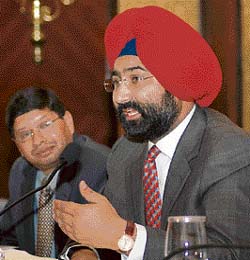
IN WHAT could play a crucial role in the Ranbaxy-Daiichi deal, ET has learnt that there is a clause in the agreement which says that the 34.8% holding of promoters will be sold through a stock exchange transaction. But this can only happen if the Ranbaxy share price touches a minimum of Rs 729 (Rs 566 on Friday) to sell the promoters’ stake at Rs 737 per share to Daiichi Sankyo. This is because Indian laws allow bulk deal transactions only at a price which is 1% more or below the market price or previous day’s closing price.
A stock exchange transaction will result in the promoters saving more than Rs 1,000 crore which they would have to pay if this was an off-market transaction. Unlike an off-market transaction which attracts a 10% long term capital gains tax, stock exchange transactions do not attract capital gains tax. The promoters will therefore hope that the Ranbaxy stock price reaches the magical Rs 729 figure before the transaction is executed. But that depends upon the movement of the Ranbaxy stock. It will decide whether the Singh family will transfer its 34.8% stake in Ranbaxy to Daiichi through direct off-market sale or through negotiated deals on stock exchanges.
Considering that the stock market has been going through a bear phase and the Ranbaxy stock on Friday reached its 3-year high level, legal circle sources are uncertain whether the Singh family will be able to conclude the proposed transaction through negotiated deals and thereby will be eligible for securities transaction tax. If not, the Singh family will have to sell its shares to Daiichi through a off-market deal, attracting huge tax liability.
“As it appears now the possibility of the Singh family ends up with paying huge capital gains tax is very high. Only advantage the family enjoys is that it has another nine months to consummate the deal,” said a legal source. When contacted, a company spokesperson said: “We cannot comment further on the deal.” It is however learnt that the company will opt for an onscreen transaction and wait for its share price to touch Rs 729 and execute the sale to adhere to the domestic market regulator Securities and Exchange Board of India’s (Sebi) rules. Plan B may be in place for off-mkt sale
“THE moment the share price touches the minimum level of Rs 729 per share, they will do the transaction on screen,” said a source.
An off-market transaction would invite a 10% basic capital gain tax, 1% surcharge and an additional 3% tax on the surcharge, a source said. But block deals done through stock market transactions will mean that Ranbaxy promoters will have to pay a nominal securities transactions tax (STT) of 0.125%. In addition, it will have bear some small costs such as broker’s fee and 12.5% service tax (on the broker’s fee), which could run into few crore, says a source
This could save the promoters from paying a total tax of around 11.3% or about Rs 1,053 crore. The promoters signed an definitive agreement to sell their entire 35% stake to Japanese company Daiichi Sankyo for Rs 9,578 crore on Wednesday.
But market watchers say Daiichi and the Singh family cannot wait indefinitely for the transaction to take place. Therefore, it is possible that there may be a Plan B which may involve off-market sale if the price does not reach Rs 729. While the official statement released by Ranbaxy and Daiichi on Wednesday said the acquisition (the stake sale plus open offer plus preferential allotment) will be completed by March 2009, Ranbaxy CEO Malvinder Singh at the press conference said he expected the transaction to be completed by December this year
Ranbaxy’s shares closed at Rs 566.90, up 4.31% from Thursday’s close of Rs 543.50, mostly driven by speculation by US major Pfizer is exploring the possibilities making a counter offer to buy the non promoters 65% stake. Meanwhile, several brokerages, post-Daiichi acquisition announcement, have either put an ‘underperformer’ or ‘sell’ rating on the pharma major.
For instance, CLSA’s fair price for the stock is Rs 525 after factoring in the change in plans regarding demerger of R&D wing which would add to research costs as also the strengthening of the balance sheet due to the preferential allotment to Daiichi Sankyo. It has given an ‘underperformer’ rating on Ranbaxy in the backdrop of no near term triggers for the stock.

